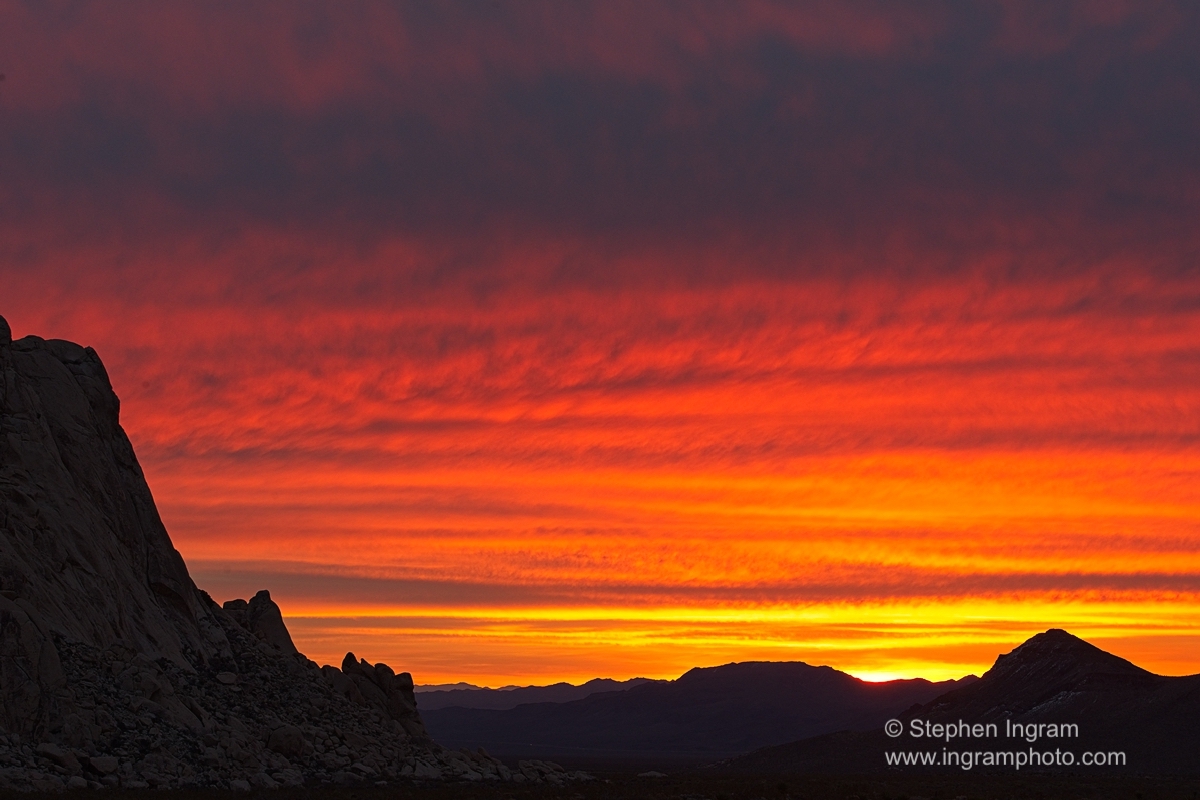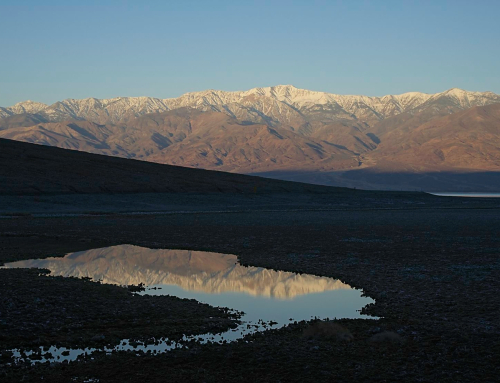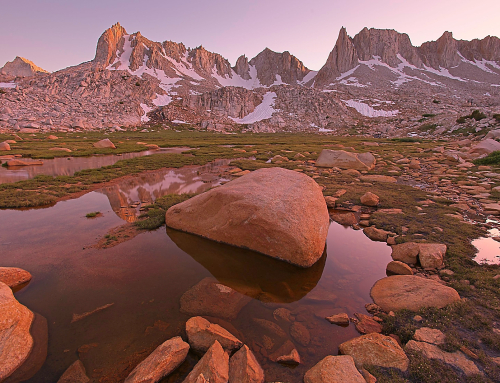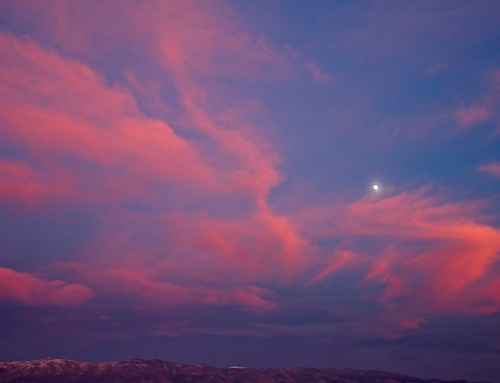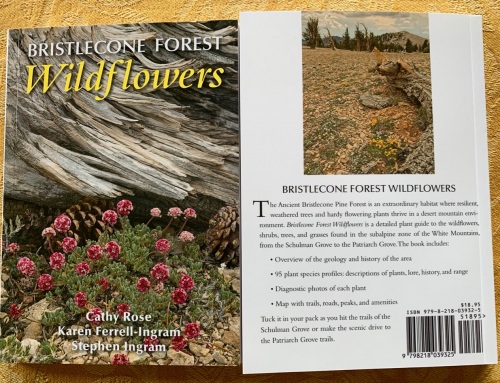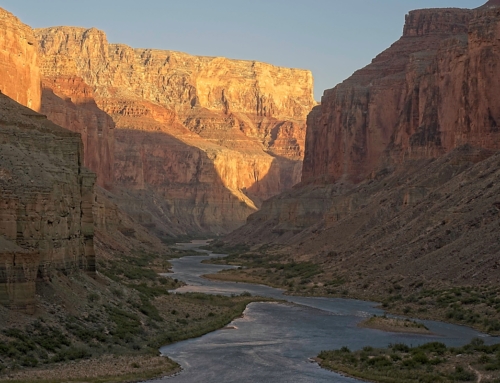“It was the best of times, it was the worst of times… it was the season of Light, it was the season of Darkness, it was the spring of hope, it was the winter of despair…”
Well, maybe not quite despair, but frustration and gnashing of teeth were apparent as I navigated the crowded highways and streets of Las Vegas. With apologies to Charles Dickens, it really was a week of stark contrasts as I drove southeastward into the Mojave Desert, then southwest a few days later to California’s piece of the Sonoran Desert in calm, quiet Anza-Borrego. As I look back on the journey from the big city of Las Vegas to the small town of Borrego Springs, and from cold, wet snow to warm, dry flowers, the contrasts were ubiquitous.
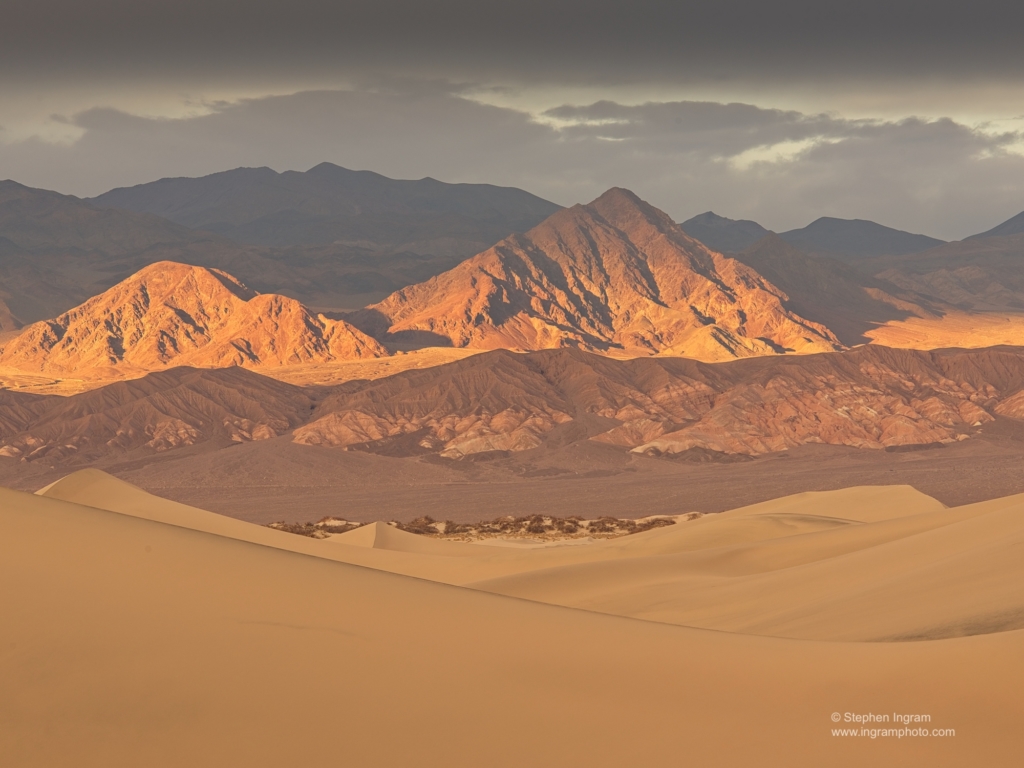
Death Valley Buttes in afternoon sun, from Mesquite Dunes, Death Valley National Park, CA
First overnight stop was at Mesquite Dunes in Death Valley, one of the driest places on earth, where it rained all night and left roads closed and flooded, and mountains blanketed in new snow.
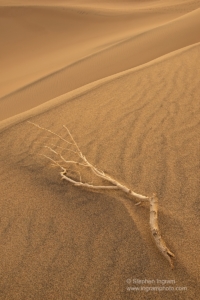
Creosote branch, Mesquite Dunes, Death Valley National Park, CA
Although the morning’s cloudy skies were not optimal for amplifying the contrast of the dunes, the rain left the dunes much easier to walk on, and erased most of the footprints from the day before.
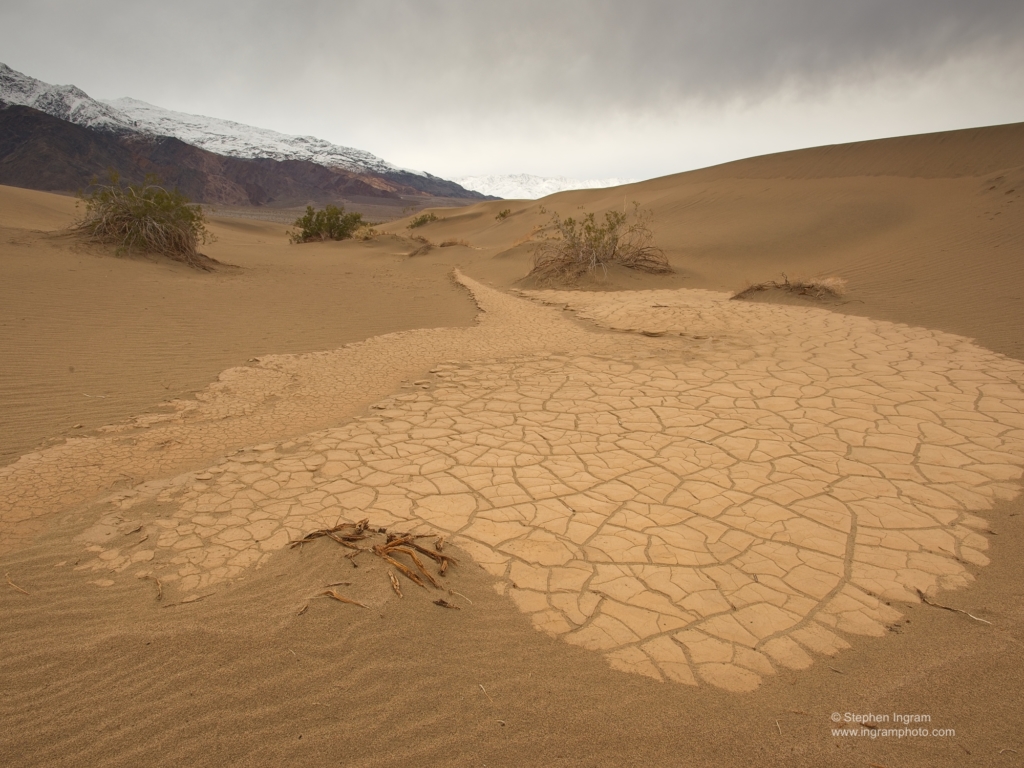
New snow covers Tucki Mountain and Cottonwood Mountains from Mesquite Dunes, Death Valley National Park, CA
The draw of Las Vegas was to attend the North American Nature Photography Association (NANPA) Summit, a biannual convention of professional and accomplished hobbyist photographers. I had not been to one of these inspiring and educational meetings in over five years, and it was a good excuse to get out to the desert again with my camera. The big, cold storm that swept through Death Valley on February 20 also brought snow to the mountains around Las Vegas. Red Rock Canyon was especially beautiful with new snow on the red sandstone peaks and the Joshua trees that surround them.
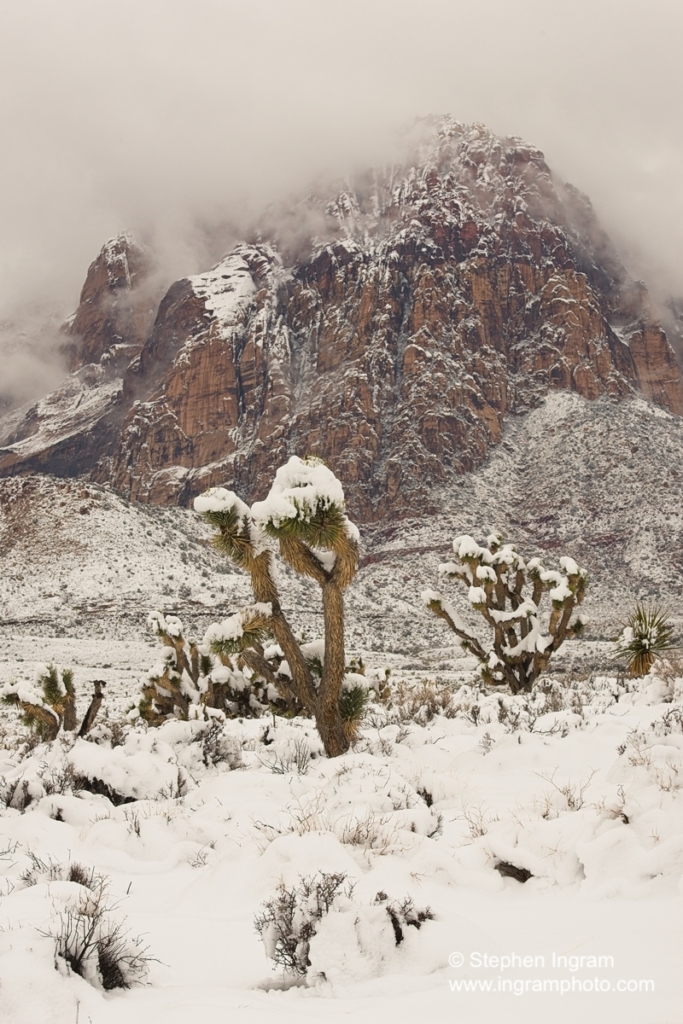
New snow at Red Rock Canyon National Conservation Area, NV

Snow on Joshua tree (Yucca brevifolia), Red Rock Canyon National Conservation Area, NV
After three days and nights of amazing photography and inspirational conservation programs but too much time indoors, I was excited to get back on the road where the next stop was in the Granite Mountains of the Mojave National Preserve, where my good friends Jim and Tasha live and work. They had snow too, but it was melting rapidly into the root systems of the cacti, yuccas and other desert plants, promising to bring a healthy flowering in April and May.
After photographing a gorgeous sunrise from Granite Cove I hit the road,

Stratus clouds at dawn, Granite Mountains, Mojave National Preserve
and after a few hours found myself in an Anza-Borrego desert wash, filled with flowering annual plants that had sprouted after October rains. Fortunately it was not windy, and the enormous specimens of Parish’s poppy, sand verbena, dune evening primrose, brown-eyed primrose, desert gold, spectacle-pod, desert lilies, and many other showy species were at their best.
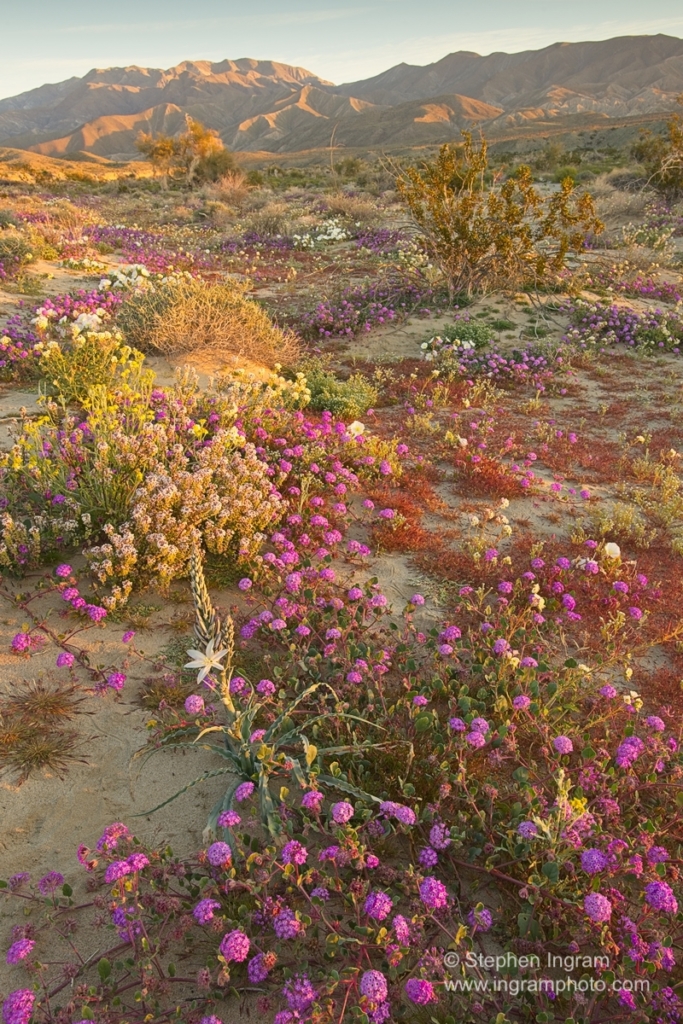
Desert lily and other wildflowers, Anza-Borrego Desert State Park, CA
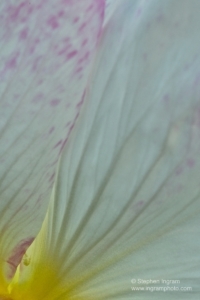
Petal detail of dune evening primrose (Oenothera deltoides), Palo Verde Wash, Anza-Borrego Desert State Park, CA

Brown-eyed primrose (Chylismia claviformis), Palo Verde Wash, Anza-Borrego Desert State Park, CA
Although the flowers were bright, the night sky around Borrego Springs is decidedly dark. Anza-Borrego Desert State Park is recognized officially by the International Dark Sky Association as a Dark Sky Park, in contrast to the light pollution emitted by Las Vegas, visible from Death Valley and the Mojave National Preserve. Still, the open spaces, wildlife, and plant life that these desert parks and preserves protect are so crucial for our well-being. California’s deserts of contrast – the Mojave and Colorado – are well worth a visit, especially during this spring of bountiful water and wildflowers.

